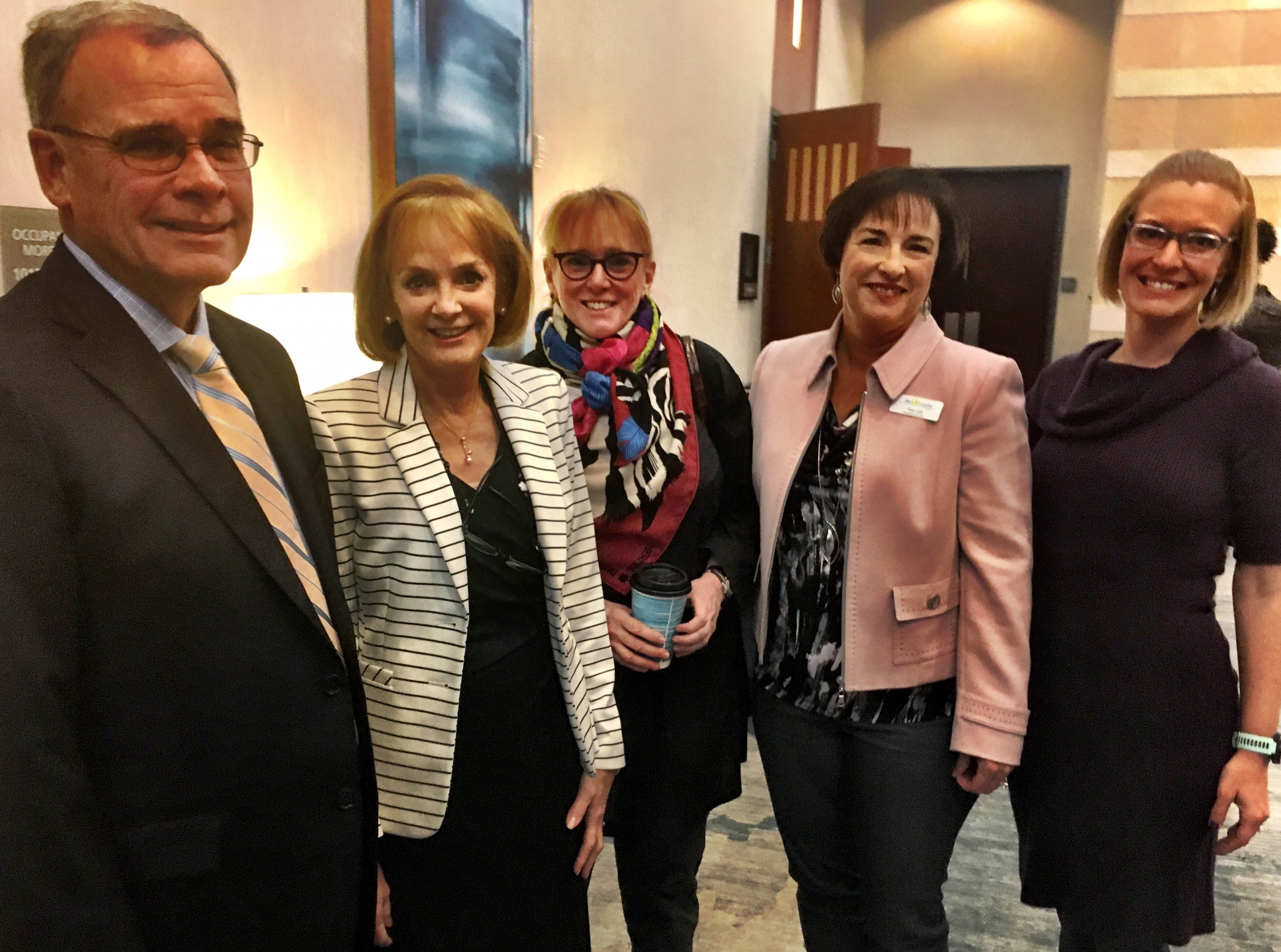In the Community
Opportunity Youth Need Re-engagement
 |
| From left: Kristen Lewis, director, Measure of America; Tom Crockett, executive director, Together We Can Foundation - Smart Transitions; Dr. Linda Rice, vice president for grantmaking, Hampton Roads Community Foundation; Dr. Deborah DiCroce, president & CEO, Hampton Roads Community Foundation |
The military makes a big difference when you look at the number of disconnected youth between the ages of 16 and 24 living in Hampton Roads, says researcher Kristen Lewis, who co-wrote A Million Reasons for Hope, a 2018 national report about disconnected youth.
Lewis, the co-founder and director of New York-based Measure of America, highlighted the issue of youth disconnection at a Hampton Roads Community Foundation breakfast forum in Virginia Beach, VA on October 17. About 300 business, government, nonprofit and education leaders attended the foundation's inaugural Understanding Hampton Roads program, which was presented in partnership with Together We Can Foundation -- Smart Transitions.
Measure of America's analysis of U.S. census data puts the overall percentage of disengaged or "opportunity" youth in the region at 8.9% -- below the national average of 11.7% and the Virginia rate of 9.8%.
"But that rate is distorted by the 18% in the region serving in the military," Lewis noted. Factor out young adults in Hampton Roads employed by the Navy and other service branches, and the region's rate of disconnection jumps to 12.4% .
That means one in eight people in Hampton Roads between the ages of 16 and 24 are not in school, the workforce, job training or the military during a critical time in their lives.
"Disconnected youth are cut off," Lewis explained. Not being on an education or career track deprives them of mentors, connections, dignity and skills that can help them successfully transition to achieving happy, productive adult lives.
 |
| Disconnected youth breakfast forum attendees (from left): Alice Adoga, Jannell Riddick, Stacy Nixon and Sharon Felton |
Lewis pointed out that rates of youth connection vary throughout South Hampton Roads from a high of 19.2% in Portsmouth and the southwestern part of Norfolk to 10.4% in the northeast part of Norfolk. They also vary by race and ethnicity with 14.9% of black youth considered disconnected and 10.1% of white youth considered disconnected.
Nationally, Measure of America, a division of the New York-based Social Science Research Council, shows disconnected youth are;
- 65% more likely to be poor
- Four times as likely to have a child
- Three times as likely to have a disability
A study that tracked groups of disconnected and connected youth over 15 years of time found significant differences. Fifteen years later, those who had connected with education and careers as youths or young adults earned an average of $31,000 more a year, were 45% more likely to own a home, were 42% more likely to be employed and were 52% more likely to report being in excellent or good health than their peers who were disconnected as teens or young adults.
 |
| Disconnected youth breakfast forum attendees (from left): Bruce Bradley, Sarah Bishop, Kirkland Kelley, Tina Gill and Melissa Day |
"There is a potential generation of $12,000 a year in annual tax revenue from each opportunity youth," Lewis said. "Multiply that by the 4.6 million disconnected youth in the United States, and that is a $55 billion revenue gain."
To improve the situation in Hampton Roads, Lewis recommends looking to long-term, measurable strategies that address root causes of disconnection and bring together multiple partners ranging from businesses and nonprofits, educational, health and governmental institutions.
"Young people need optimism. Grit is not enough," Lewis said. Disconnected youth "have tough lives and need the support of society." Learn more here.
The Hampton Roads Community Foundation is southeastern Virginia's largest grant and scholarship provider. Understanding Hampton Roads is its signature community engagement component.


